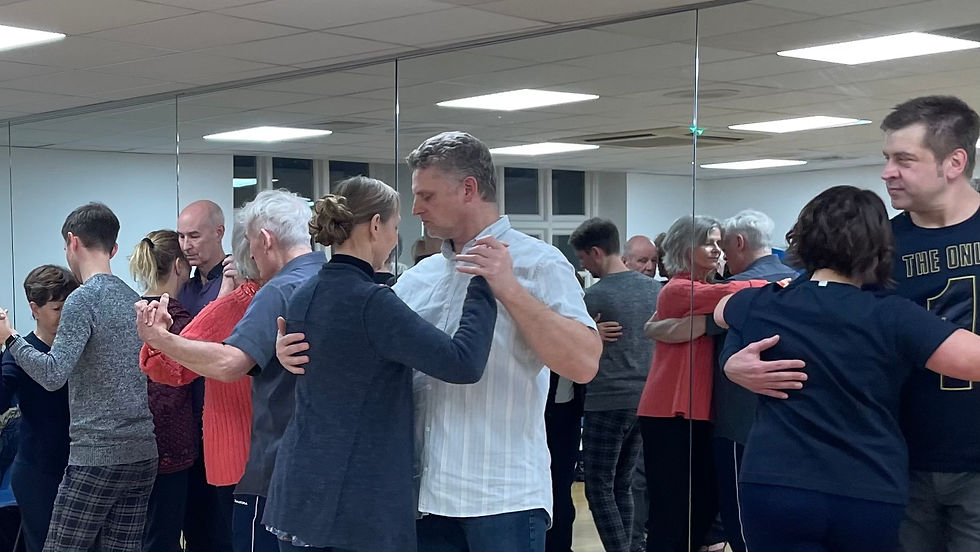Sculpting Space - a new way to think about leading and following
- tangoadmin4
- Apr 17
- 3 min read
Years ago Kate and I had a private lesson in London with some travelling tango teachers who explained how to lead a back ocho. The trick said then man of the duo - and he demonstrated with his partner - was to tap her shoulder blade twice for a back ocho and once for forward ocho. There are many lessons to learn from this, not least that just because someone is 100% Argentine it does not make them good teachers. This is clearly an extreme case - an eccentric private code two dancers had worked out for themselves. But there is an aspect of this idea which constantly crops up when people are learning to lead and follow. It’s this: the belief that a lead is something the leader does to the follower to communicate his intentions. It manifests itself in a question leaders regularly ask, What signal should I give my follower if I want her to cross/pivot/take a forward step or whatever it happens to be.
There is a much better way to think about the leader/follower relationship than this. The process involves not acting directly on your follower, but thinking instead about manipulating or shaping the space the couple occupies.
For this approach to be possible, two principles need to be in place.
The first is that each step of the dance is a process of offer and acceptance. The leader suggests a step, the follower accepts his offer and begins to move, and the leader follows the follower. Seen from outside, the follower appears to move fractionally first, the leader waits for her to begin and then joins her. It is never the case that the leader sets off and hopes his follower is good enough to keep up. He certainly isn’t dragging her bodily through a step.
The second is this: if a follower feels a space open up in font of her, this is an invitation to step. She does not need to wait for the leader to give her any further indication of what comes next. A space appears, she steps into it.
Once these two principles are put into practice we have a way of moving around a dance floor that doesn’t involve the leader physically manipulating the follower in any way. He offers her a space, she steps into it and on arrival discovers he is offering another space, and she moves into that one. The effect when it’s done well is for a follower to feel she is moving with complete freedom, confident that she is going exactly where their combined movement has conspired to take them. Notice, this offering of space on behalf of the leader does not mean he simply gets out of the way. At every point he is defining the limit of this space, shaping it, so that at times the follower seems to move through a channel that has opened in the air in front of her.
If this is starting to sound a bit like magic that is because that’s exactly what it can feel like.
One of the chief benefits to this approach is that it makes the follower the centre of the leader’s attention and concern rather than his own repertoire of steps. Leaders who apply these techniques don’t get ahead of their followers, they don’t hurry on to the next step before the current one has been completed. They are focussing on their follower in the here and now, not on the dance they picture in their head. This in turn gives followers the freedom to enjoy the benefits of the valuable skills they may have spent years mastering. To exercise the control of their axis without it being compromised, to fully experience the bodily spiral that make pivots so expressive, to wholly engage in the dialogue with their leader, and ultimately to share the pleasure of two bodies conspiring to move together as one. Which, in the end, is what we're all trying to achieve.







Comentários